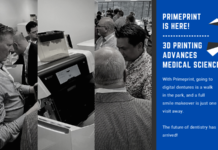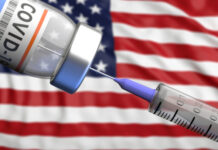What you can do to Prevent Periodontal Disease
According to the American Dental Association and the Center for Disease Control and Prevention, Americans over the age of 30, are prone to chronic Periodontitis and gum disease. In the U.S. alone, over 47% of adults in this age group are experiencing mild forms of gum disease, while 9% are experiencing severe forms of this disease.
Gum disease, otherwise known as Periodontal disease, affects the soft and hard tissues surrounding the mouth. This infection can be painless at first onset. However, over time you will feel the overwhelming tender sensation of the gums as they begin to swell. If this is left untreated, you can begin to experience tooth loss and eventually bone loss.
RELATED ARTICLE: Does Andrew Yang Support the One China Policy? Andrew Yang’s Mayoral Candidacy & The United Front Work Department
Solutions are Available
This is an issue that, although it persists in over 47% of Americans, is still treatable with today’s dental technologies. Similarly, it is also just as preventable with today’s at-home dental products such as a pulsating toothbrush. While many dentists can still provide conventional treatment methods for gum disease, other dentists prefer to opt in for the latest dental technologies. One of these cases is laser treatment for gum disease, which allows the dentist to treat the gums without inflicting severe pain and discomfort to their patients.
According to Dr. Suffoletta of Functional Aesthetic Dentistry in Las Vegas, “Having some of the latest dental equipment for our patients isn’t about finding ways to hype up a marketing strategy, it’s about comfort through painless procedures that can also be completed faster and provide a faster post recovery time, thanks to the brilliant engineers in our industry.”
Dr. Suffoletta continued to state, “Gum disease is a severe infection not just for Americans but people all over the world. This could have potential diminishing health causes in the heart and cardiovascular system. As such, I think that people need to start thinking about their health by starting at the mouth. What we eat affects our oral health and that can trickle down through the rest of our body.”
RELATED ARTICLE: Restricting the Presidents’ Nuclear Power After China Says Prepare for WAR?
Causes and Warning Signs
According to the CDC, there are many factors that can increase the chances of you getting gum disease. Poor oral hygiene, along with smoking are at the top of the list. You can also find, diabetes, stress, heredity, crooked teeth, a defective filling, you could have bridges that no longer adhere properly, medications that can cause dry mouth and for women, even hormonal changes such as pregnancy can become a factor.
In any case, when problems like these arise, such as periodontal disease, you can usually see the tall tale signs before the problem progresses too far. For example, you can expect to begin to get a sense of bad taste and bad breath on your mouth. Tender, swollen and red bleeding gums is another warning sign that you could be getting periodontal disease. Additionally, other physical signs will begin to manifest such as receding gum line and loose teeth.
Unfortunately, you can’t always feel the infection developing in the gums. This is one reason why many don’t know they have periodontal disease until it is too late. The CDC is trying to mitigate this problem by increasing awareness and access through partnerships with the AAP (American Academy of Periodontology) and the ADA (American Dental Association). As they state, “It is to improve and sustain surveillance of periodontal disease in the adult U.S. population.”
What you can do to Prevent Periodontal Disease
First thing is first!
- Be diligent about brushing your teeth two to three times per day.
- Be diligent about flossing after you eat, flossing helps remove food that helps bacteria thrive.
- Drink water after you eat, drinking water also helps remove food debris after a meal.
- See a dentist at least twice per year, every 6 months.
- Get a dental cleaning every 4 months if you’re not a smoker and every 3 months if you do.
- Eat a healthy diet as much as possible. Healthy, nutritious foods are great for trying to prevent gum disease in the first place.
According to some dentists and educators, education and the will to do what one must are a hurdle in some cases. While many are educated on this subject during elementary school, it is quickly and easily placed in the back burner until problems begin to persist.
In other cases, such as smoking, which can create an addiction, are not so easy to stop. This lack of will to stop a bad habit that damages the teeth over time can quickly deteriorate the enamel as more plaque and stains continues to develop. In general, everyone should visit the dentists for a check up at least twice per year to catch problems at an early onset. As well as to prevent those problems from becoming worse.
















[…] ADA & CDC Report High Gum Disease Prevalence Amongst Americans […]
[…] ADA & CDC Report High Gum Disease Prevalence Amongst Americans […]
[…] teeth even if vigorously, is better than neglecting your oral hygiene. For example, according to The People’s Olive Branch, based on an ADA & CDC report, in the United States up to 47% of Americans over the age of 30 […]
[…] loss is becoming more and more common in America. According to the People’s Olive Branch, 26% of adults aged 65 years and above have lost 8 or more teeth. The rise is more prevalent in […]
[…] ADA & CDC Report High Gum Disease Prevalence Amongst Americans […]